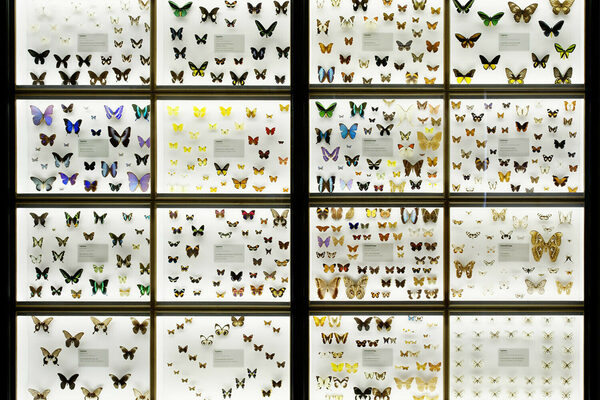Permanent exhibition: Art forms of nature
The Museum Wiesbaden is honoring the natural scientist Ernst Haeckel (1834 to 1919) with a permanent presentation in the year of the 100th anniversary of his death.
Haeckel's lithographic image plates - supplemented by video material - illustrate the symmetrical construction principle of nature.
Ernst Haeckel's compendium of the "Art Forms of Nature", published between 1899 and 1904, was a source of inspiration for numerous artists, craftsmen, sculptors, draughtsmen and architects. Born in Potsdam, the natural scientist, philosopher and artist traveled the world, promoted Darwin's theory of evolution in his studies of radiolarians and founded the Zoological Museum in Jena.
August 8, 2019 marks the 100th anniversary of his death. The professor of zoology is not only known for his scientific findings on evolution, ecology and morphology. Haeckel produced over 100 iconic lithographs based on his anatomical and microscopic studies for his work "Art Forms of Nature". They also show creatures that are not visible to the human eye in tangible nature. In particular, depictions of radiolarians and plankton from the ocean gave the general public a new, visual experience of a reality that lies hidden.
Connection to Art Nouveau
Scientists and artists at the turn of the century both drew on Haeckel's plates. Art Nouveau artists, whose work revolved around nature, tried to capture the world discovered by Haeckel and the new knowledge of the laws of nature in art.
The Parisian architect René Binet, for example, used a radiolarian pattern as a model for the entrance gate to the 1900 Paris World's Fair at Place de la Concorde, while Henry van de Velde incorporated the symmetrical patterns into the design of his furniture. Haeckel's work became an important source of the formal treasures of Art Nouveau.
